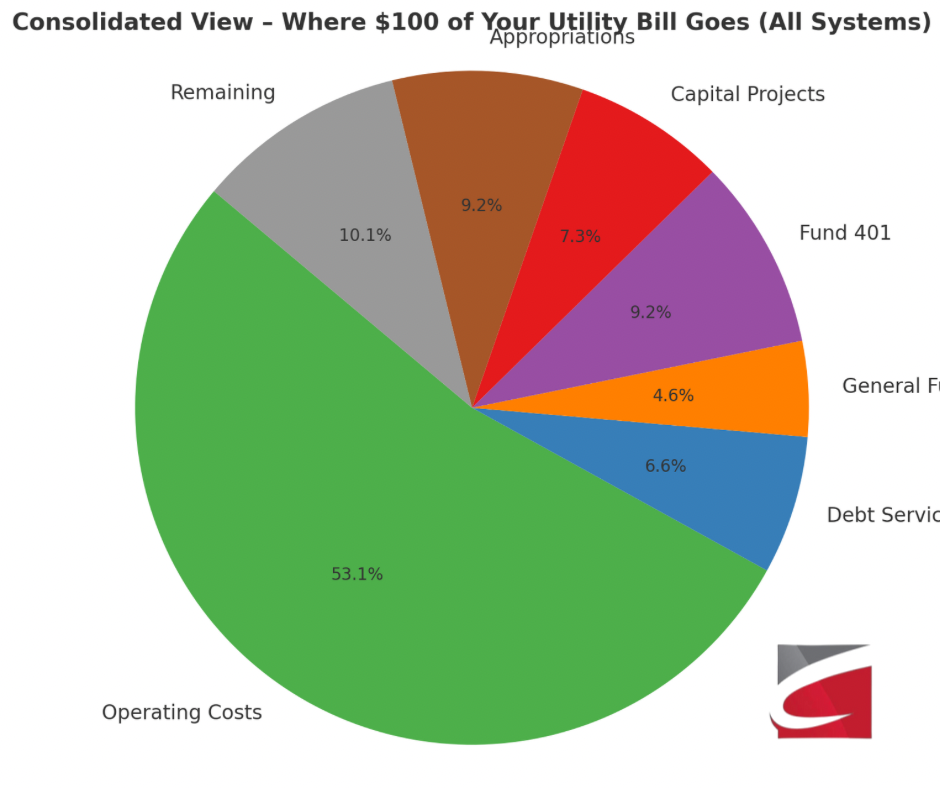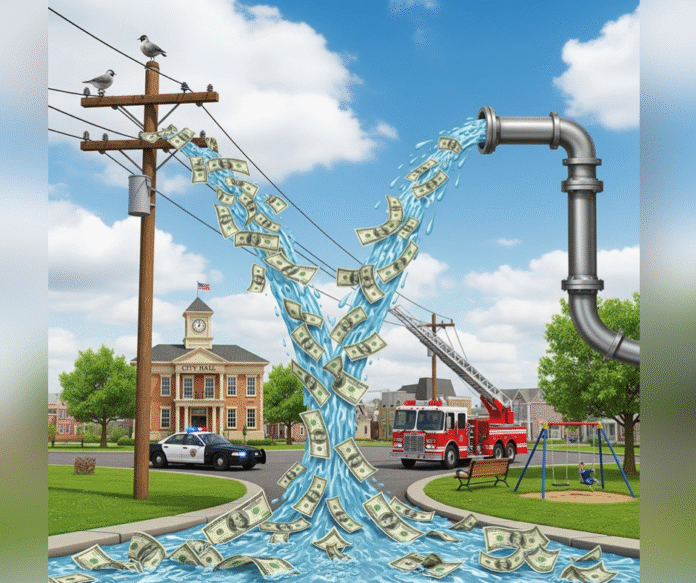One Bill, Many Assumptions
Every month, Alexandria residents receive a single bill that covers electric, gas, water, and wastewater. Most assume that payment goes directly into keeping the lights on, water flowing, and sewers working. City records show a different story.
For years, millions of dollars collected through utility bills have been transferred out of the utility systems and into city operations. Officials describe these transfers in vague terms such as “general fund contributions,” “Fund 401 allocations,” or “appropriations.” What is not explained clearly to the public is that those dollars possibly help pay for other services such as police, fire, parks, recreation programs, ATRANS buses, and city hall operations.
Residents are left believing their bill supports utilities alone, while in reality it also subsidizes city government. That lack of detail is what makes the practice feel hidden.
Breaking Down $100
Think of your monthly bill as $100. Based on the city’s own studies:
- About 55 to 60 dollars pays for direct utility operations such as fuel, labor, and maintenance.
- Another 20 to 25 dollars is transferred out. Some of it supports the general fund, which pays for services like police, fire, parks, recreation, and ATRANS. Another share covers administrative overhead such as billing, IT, and management. In the case of the electric department, nearly 10 million dollars each year is appropriated into city hall’s budget with no breakdown of where it lands.
- The rest goes to debt service and capital projects, though consultants warn the money is not enough to keep aging infrastructure in reliable shape.

What is missing is clarity. Nowhere on your bill does it show how much of your money went to police, how much supported buses, or how much helped cover park maintenance. Residents are asked to trust broad labels while their money quietly shifts away from utilities.
Why It Matters
City leaders often say Alexandria’s rates have not changed since the 1980s, but bills continue to rise. The reason is not only fuel costs but also the fact that utility revenues are being used as a hidden tax to support city hall.
That setup creates fairness concerns. Utilities are non-optional. Families must keep the lights on, water running, and toilets flushing. That means even the poorest households are forced to pay these hidden transfers. While wealthier families may not notice, low-income and marginalized residents carry the heaviest burden.
For example, a household earning $25,000 per year may spend 10 percent or more of their income on utilities. When part of that bill is shifted into police or recreation budgets, it becomes a regressive tax that falls hardest on those least able to pay. Deferred maintenance caused by underfunding utilities also hurts marginalized neighborhoods first, through longer outages, boil water advisories, sewer backups, and slower repairs.
Our Approach
UrbanCast will not call names or dismiss concerns with words like “fake news.” We believe the community deserves better than insults and political theater. Our focus is on facts, fairness, and professionalism. We remain open to constructive dialogue with the administration and city leaders because when officials and media engage openly, the entire community benefits.
Transparency is not about vague categories. It is about telling residents exactly where their money is going. If utility payments are helping fund police, fire, parks, or buses, the city should say so clearly. If millions are appropriated from electric revenues into city hall, the public should see where those dollars land.
Looking Ahead
This series, “Where Your Utility Dollar Really Goes,” will take residents inside the numbers for each system: electric, gas, wastewater, and water. It will show not only how much money each department collects but also how much is diverted to support other city services.
At the end of the day, we all pay one bill. The people of Alexandria have the right to know if that bill is paying for utilities or quietly paying for city hall.








